https://www.youtube.com/watch?v=p4spujcM0-U
Keith Richards Style Rhythm and Lead Guitar Lesson (Rolling Stones) - EP106
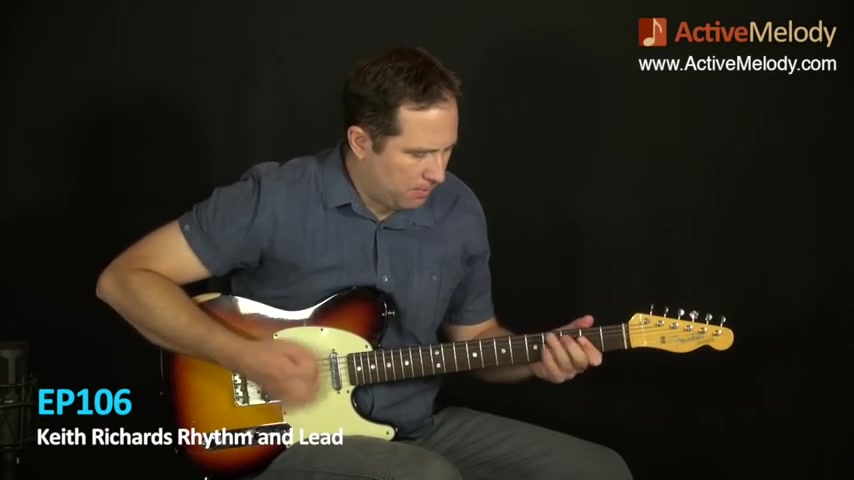
Hey , everyone .
This is Brian from active mealie dot com .
Well , on this week's guitar lesson , we're gonna take a look at a Keith Richards style rhythm and lead .
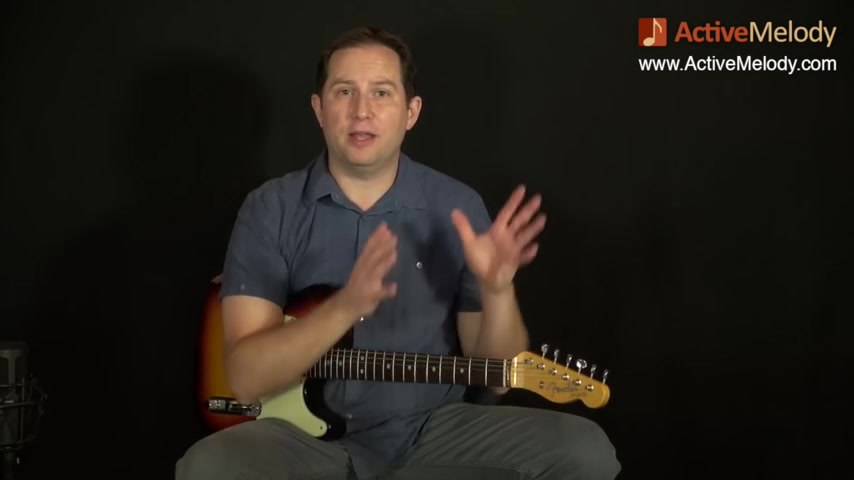
Now , Keith has a very unique way of playing rhythm .
You can always tell it's him .
He's got a lot of signature looks .
So we're gonna dissect some of those , but he's also got a very signature way of playing lead and , and , and to me , Keith is a good combination of blues and country .
You know , you kind of mix those two , you end up with rock and roll anyway .
And so , uh , you know , Keith has a little more country than a lot of people realize he's very twangy .
He plays on a telecaster most of the time and , uh , just very cool musician .
In fact , I just saw the Rolling Stones here in Nashville a few nights ago and even though he's in his seventies , he still got it .
So , um , anyway , we're gonna split this into two parts and this part , we're gonna take a look at the rhythm .
Uh , if you want to download the , the jam track , the MP3 file that you can practice with that'll definitely help , uh , get your timing down .
So you're gonna get that at active melody dot com .
Just look for EP 106 .
That's a lesson number for this lesson .
You'll also be able to download the table and the on screen tab viewer and you'll have access to the part two video , which will be the lead part .
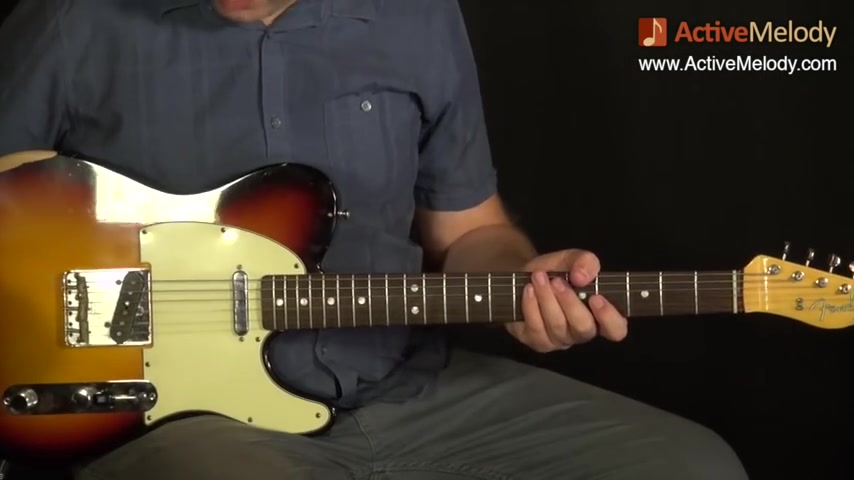
But let's go ahead in this video and take a look at the rhythm .
All right .
So let's talk through tone settings real quick .
I'm playing on the telecaster and I have the uh pick up selector switch on the bridge pickup and I have the tone in the volume all the way up .
I am using one pedal which is a tube screamer by Ibanez , which is a Ts eight Ts 808 pedal and I have the overdrive at about 60% .
The tone and the level are both at about 75% I would say .
Um And that's really it .
So don't get too caught up in , in effects .
You don't need a lot .
You just need some .
If you want to sound like uh like Keith , you need a little bit of overdrive .
You can plug straight into an app and get that .
You don't have to have it though .
You can do this on an acoustic guitar , you can do a clean channel .
Uh This will work uh in a variety of different ways .
Um One other thing to point out is I'm playing in standard tuning .

Uh So that's , you know , Keith will play oftentimes in open G tuning and in fact , he'll even lose his sixth string , he'll take that off uh And just play open G , but we're gonna be playing standard tuning and this just because I want to make this accessible and something that you could just , you can play , you don't have to , you know , rig a guitar and take strings off and all that stuff .
That's not practical .
So , so anyway , uh there's four chords used in this , there's an a chord ad chord , a G chord and ac chord .
These are all chords that we know .
Now , I'm gonna show you how to play the , the , the D cord and the G chord in a little different way .
But we , but you know those chords .
Um but what gives Keith his signature sound is he'll start with a chord , he'll jump real quickly to another chord and then go back to a chord .
Let me demonstrate that .
For example , in a , see how I play in a , then I go to AD .
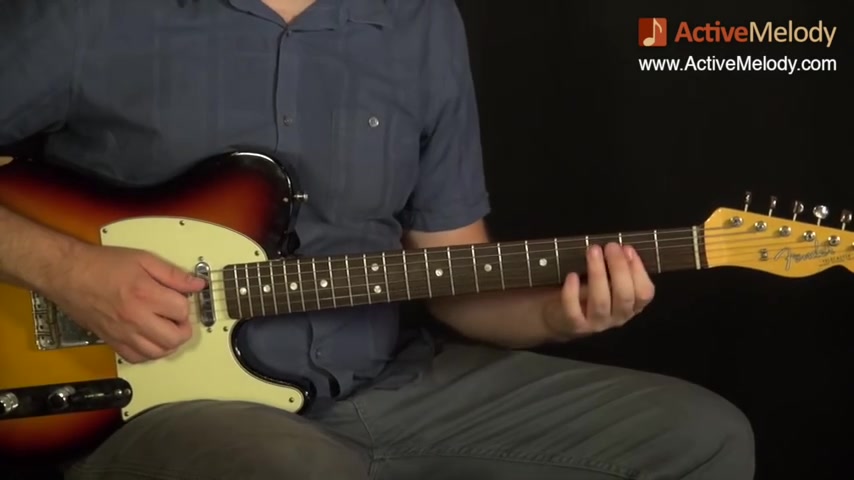
Now this is a different way of making ad , but I'll show you how to do it or he'll go to a ad and played , you know , real quickly , go to a G and then back to AD .
Now that's , that's a key thing that he does a lot and it gives and when you hear that you just , you think rolling stones , you think , you know , you think Keith Richards and so , so we're gonna be covering that as well as um the , the right hand , there's a strumming technique on this .
That's just a lot of down up .
So you keep your hand in motion the whole time and that's gonna be probably your biggest challenge in , in learning this .
This is a great lesson , by the way on rhythm .
If you're trying to get , if you struggle with timing and rhythm , this is a really good one because we're gonna go into some ghost strums where you've got notes , but they don't make a noise .
Um But they're rhythmic and they're part of the flow of your right hand in motion .
And uh so we're gonna be covering all of that .
So if you've got the jam track , this is a , this , you really will help you with your timing .
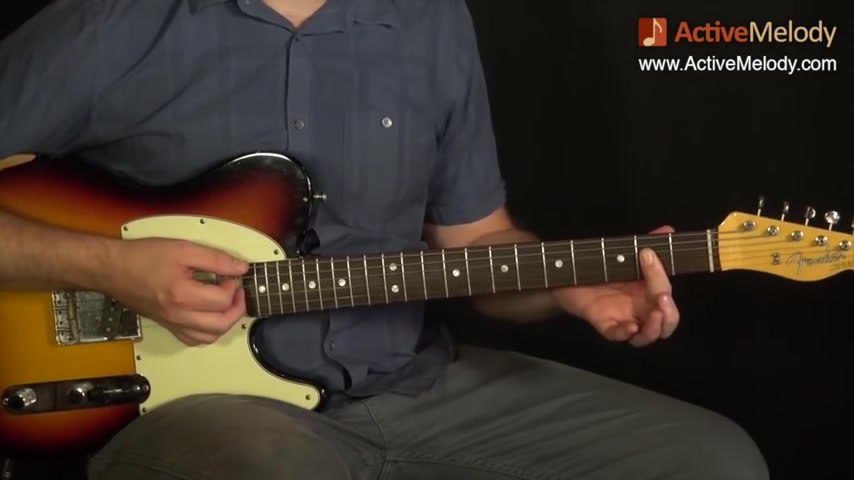
So definitely wanna check that out .
Um uh Let's learn the notes first and then we'll get into the jam track .
That's how you can practice this .
Um All right .
So let's start this thing .
Uh We'll start with what the left hand is doing .
So I'm barring the first four strings on the second fret , but I'm only playing strings 54 and three .
Those three , those are the three I'm trying to hit .
Now you can accidentally hit the second string and that's gonna work as well .
That's part of the accord .
But these three are the ones you're trying to hit .
So the first thing that you're gonna play is a down stroke followed by AAA ghost drum or just sort of a muted strum like this .
Now , the way I do the muted ST drum is so we , we play our a chord like this , then I just let my fingers just kind of rest on the strings , so mute them .
And so that's my second ST drum and both of those are down strokes .
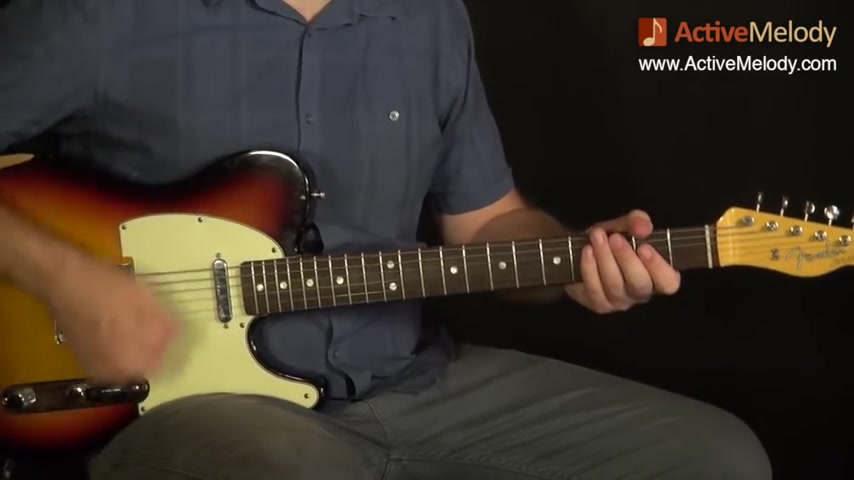
So the first one , the second one , that's how you're gonna start this .
Now , watch the hand .
If you notice the hand without any anything , the motion is always there down , up , down , up , down , up .
So even when you're just playing down strokes , your hand obviously has to come back up to be able to play that downs stroke .
So just keep that in mind and once you get this thing going , you'll feel it .
Um It's gonna feel awkward in the beginning , but just , just bear with me .
So OK , so that's how we're starting it .
Now , watch this .
So we have uh So what we're gonna do here is we're gonna do an upstroke and we're gonna play the open 3rd , 4th and 5th string .
No , no hand on the front board there .
It's just those open strings .
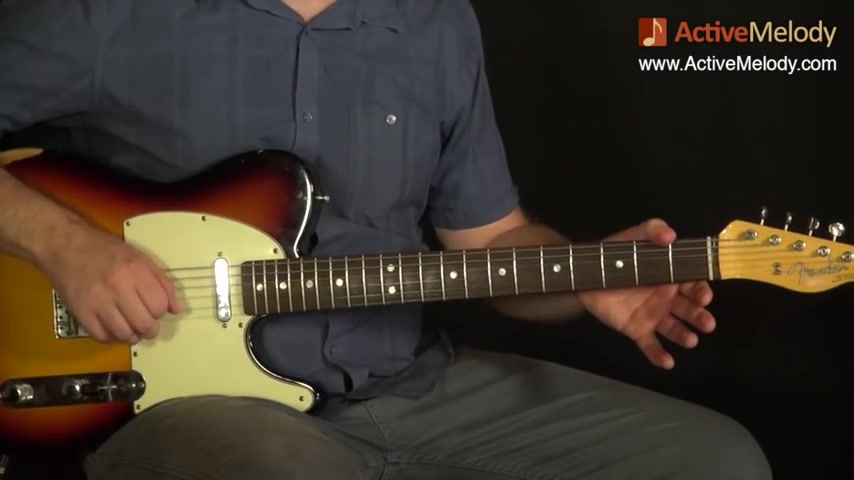
It's the G string , the D string and the A string and then we're gonna hammer on that , a cord with our pointer finger , those same four strings .
So we're gonna go .
So , so the thing to pay attention to is with the right hand , it's an upstroke and then we're gonna do one more upstroke it up .
So it goes , now let's put the two pieces together .
I'll do it slowly .
We have , we do it again .
Ok .
Now , after that , we're gonna do a down up down , but they're gonna be muted like this .
So watch this , see it or hear it rather .
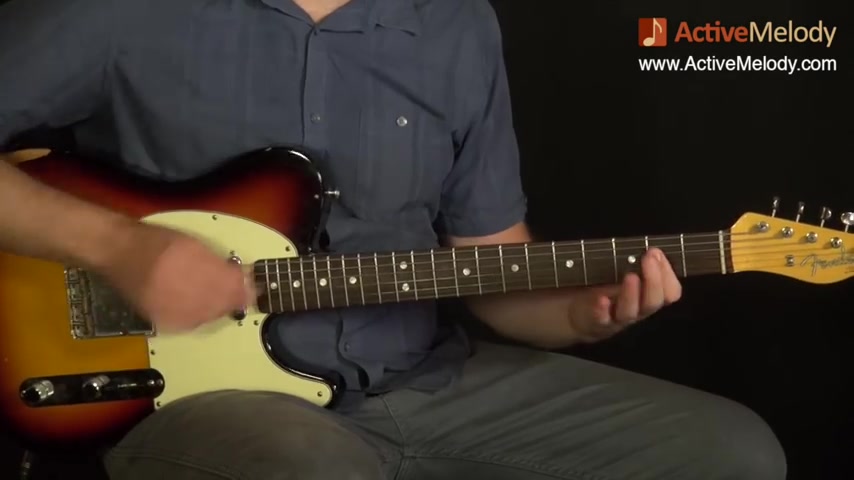
Now notice again , the right hand is always in motion down , up , down , up , down , up , down , up .
Now watch this .
What I did for that .
This is where I'm gonna hammer on that D cord that I mentioned .
And so what the way you do it is , we'll do the left hand first and we'll get to the right hand .
The left hand starts with that a cord bar in the first four strings or a second fret , but we're gonna hammer on our middle finger onto the third fret , second string and then our ring finger goes down on the fourth fret , four string and we're gonna play strings 23 and four like this .
And we're gonna do it with an upstroke with the right hand .
So it goes , so we start that , which is an A cord .
And then by hammering that on , that's actually a decor .
It's a different way of making a decor that maybe you're used to .
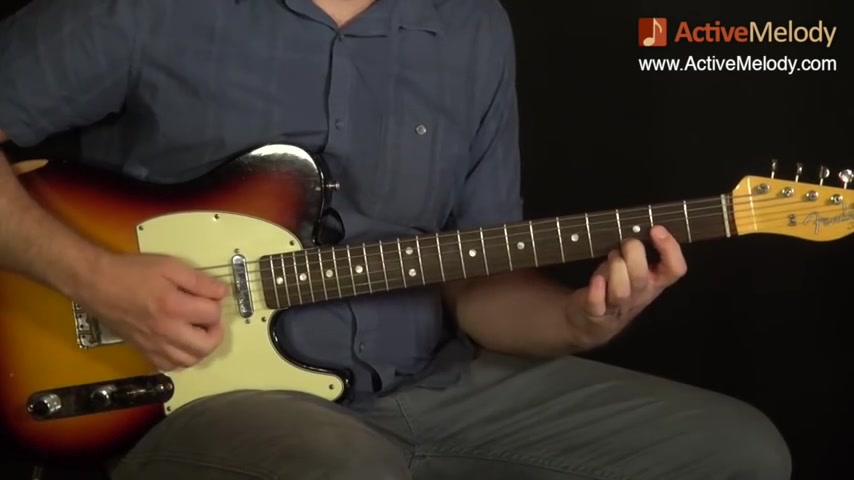
If you analyze it , the dec cord that you are used to is right here .
It's in there .
You've just added a different another note to kind of the low end there .
Instead of just playing the open D looks like this .
You , you've got this note in there .
So , ok , so let's back up .
We have , we got a hammer on and then we're gonna do a downs stroke and go , we're gonna play it and then do a pull off with both of those fingers .
So together it sounds like this .
You can start to hear that Keith Richards sound when right there .
So let's put the two , or I guess three pieces .
Now let's put it all together up to this point .
So we have , now let me do it again .
I'm gonna do it slowly .
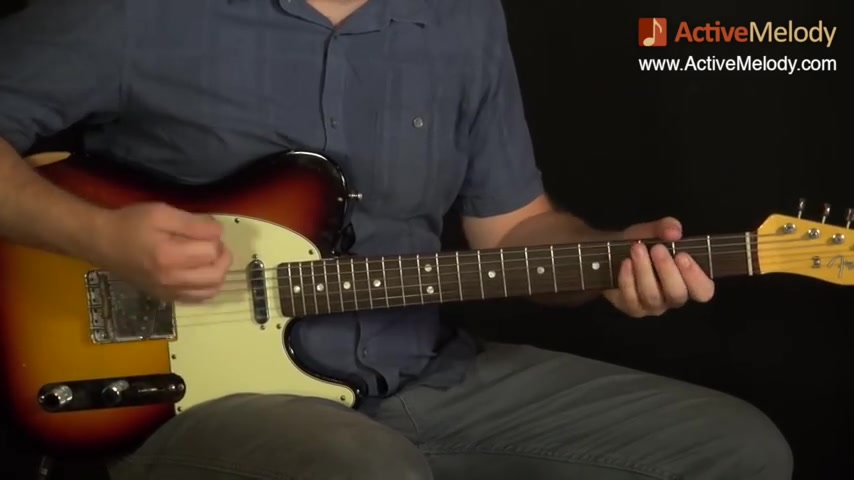
In fact , I'm just gonna keep looping it so you can start to get the feel for this .
Let me try that again .
Starts to , starts to feel , you start to get the feel of that .
Now , at the end of this , there's another ghost strum or a little downs stroke there .
That's a muted .
So we have like that and what that allows you to do is get in position to play the Decor .
Now , really , what we're doing is we're doing the exact same thing we just did here , but we're gonna do it up here .
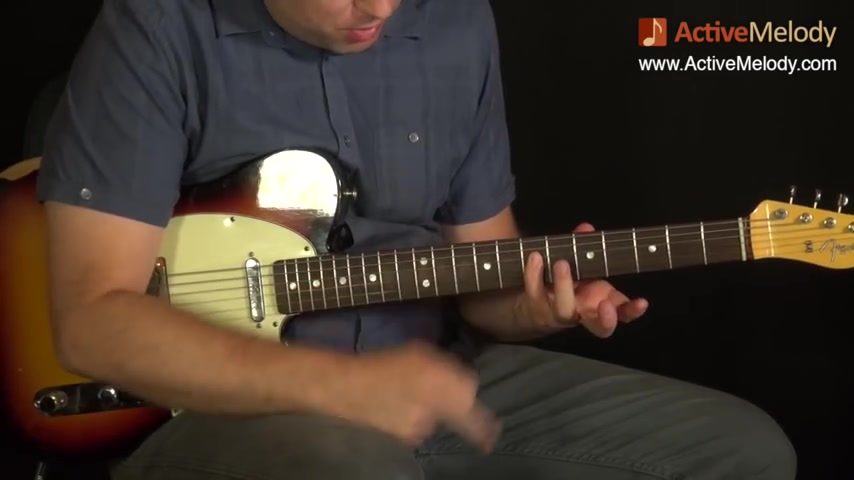
So when we're making this cord , this is ad cord , you know it , but I'm using the A shape so you can see my pinky is really doing what these , this did , this finger did .
Um I use my pinky .
Some of you may use your ring finger for that .
But uh but that's how I make it .
And so it's just barring the first four strings now on the seventh fr and we use our pointer finger to come down here and play on the fifth string on the fifth fret .
So if you think about what's going on , it's the same thing that happened here .
Let me play it with different fingers .
So you can see your nut replaced or your finger replaced what the nut was doing .
So just think of that as the a shape .
So now we're gonna play .
So then when we play the D part , it goes like this .
Now it starts with a , just that Decor there with a one down stroke followed by a ghost strum like this are muted strongly .
So there's two downs strokes .
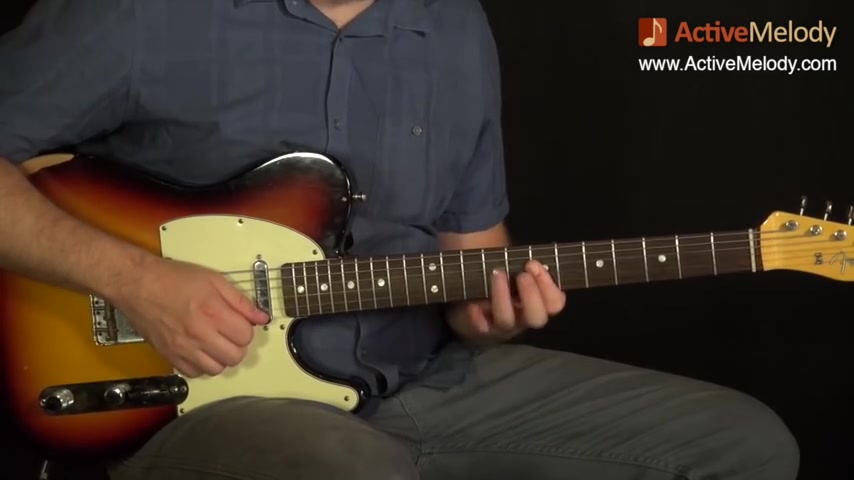
Now , watch what happens next .
That's an upstroke and I put do a hammer on and a pull off with my left hand .
Now I'm using the same little shape that I did here when we did that , but I'm doing it up here now so that I'm barring the first four strings on the seventh threat .
So same pattern , visualize it .
Your middle finger would be going down on the eighth threat , second string and your ring finger would go down on the ninth fret .
Fourth string and we're gonna , again , just play those middle or those , uh , those three strings , which would be 23 and four .
So you can see that's actually a G cord .
It's a different way of making it .
But you can see what happens there .
You hammer it on and you pull it off .
So let me play the D part .
It goes , the important thing to remember is you , that's an upstroke like that .
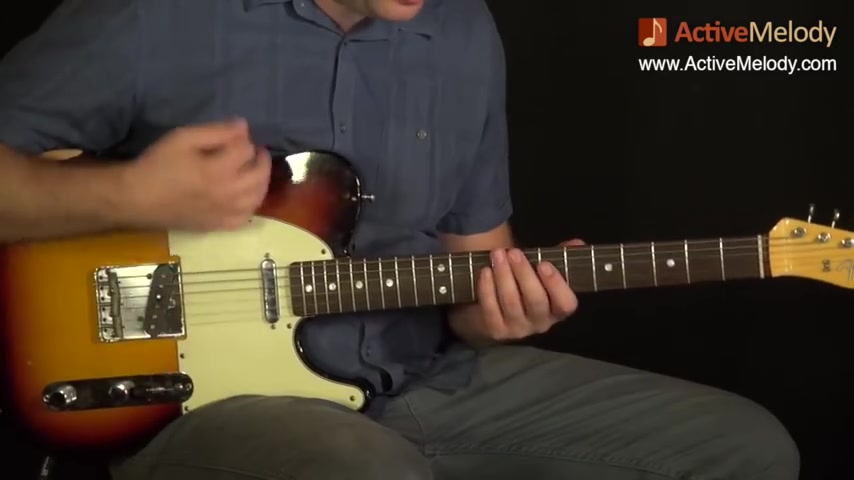
The reason it has to be an upstroke is it keeps , it happens at that point in the motion , your hand just stays going like this .
See how natural it looks .
All right .
So let's put that a part , the first part and the second part , the D part together .
So here's what we have , we have , oh , at the end of the depart after the upstroke where you got the hammer on and pull off , there was two down strokes that are muted strums , 12 .
Uh And that gets you timing wise into the , the next part which is , it goes from ac chord to a G cord , but that's what we're gonna do .
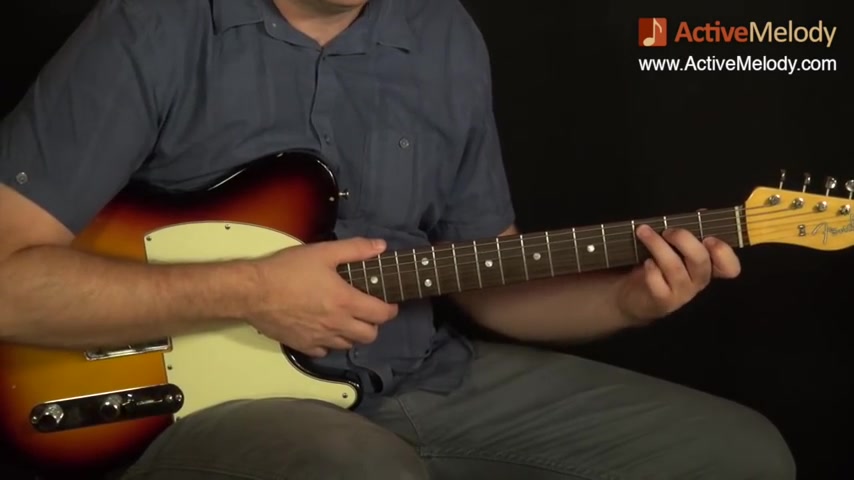
So we're gonna , so once we come , after we play those two down strokes , we're gonna come down and play ac chord , the only C chord , the way that you , you probably know how to do it already .
But the only difference is I use my pinky here on the third fret , first string to play that G note .
In the s there .
It just kind of colors .
It uh in a nice way because you're gonna go to the G court after that anyway .
So to strum that C to G , it goes like this .
So it goes up , down , up , down , down , up , notice another thing , notice how I'm making my G cord .
So I've got the C cord like this .
I just move real quickly .
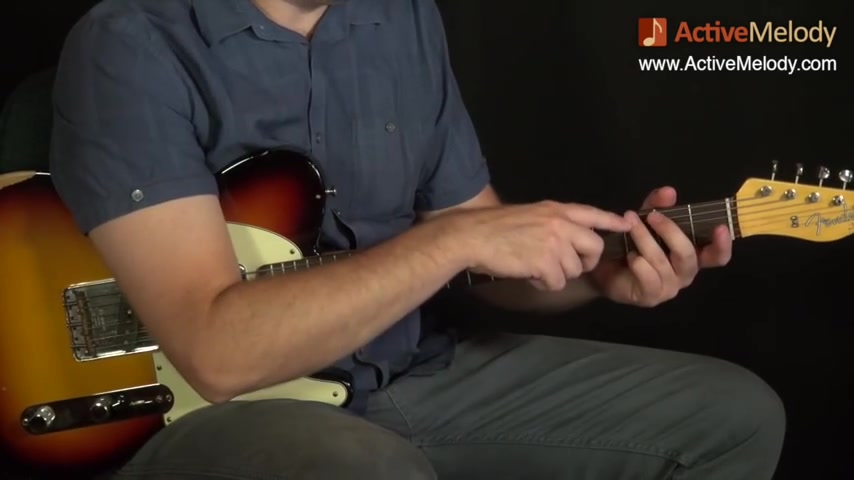
This finger does not even go down on the fret board for the G cord .
And I've mentioned this in other lessons , but my ring finger comes up here to the third fret , six string , middle finger goes down on the second fret , fifth string .
That's a G .
You may have learned a G chord like this , but it's a lot easier .
It's actually a lot more recommended to play a G cord like this because you can real quickly go back and forth between that C and G and then it loops at that point right back to the A .
So that's it .
There's an , a part and this is how I think of it , an A part ad part and a G part .
And now you're alternating between chords in each of those .
But that's really if you were to simplify it .
So let me back up , I'll do it slowly , I'll play through the whole thing and that will conclude this first part , this rhythm part again , download the jam track uh and practice along with it and also check out the tab if you haven't already .
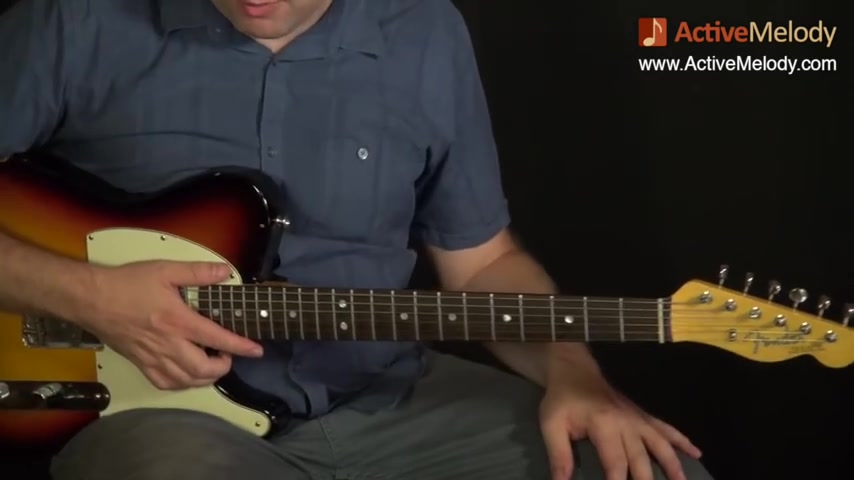
And there you go , that's the Keith Richard's rhythm .
Uh , just so much fun to play .
Uh If you want to move on to part two , the part two video , I'll show you how to do all the , all of that lead stuff , kind of the country , twangy stuff .
Um So there's a lot of material in this lesson , especially if you're a , if you're a Keith fan or a Rolling Stones fan .
But anyway , we'll see you in part two .
Are you looking for a way to reach a wider audience and get more views on your videos?
Our innovative video to text transcribing service can help you do just that.
We provide accurate transcriptions of your videos along with visual content that will help you attract new viewers and keep them engaged. Plus, our data analytics and ad campaign tools can help you monetize your content and maximize your revenue.
Let's partner up and take your video content to the next level!
Contact us today to learn more.